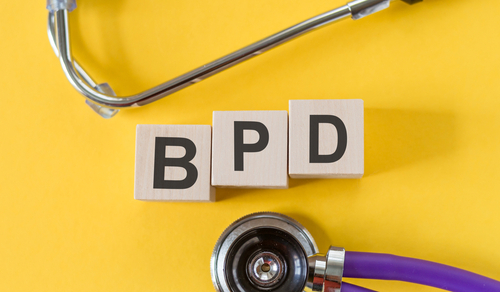Borderline personality disorder (BPD) is listed in the Diagnostic and Statistical Manual of Mental Disorders, Fifth Edition (DSM-5) as a chronic, mental health disorder. As defined by the National Institute of Mental Health (NIH), “borderline personality disorder is an illness characterized by an ongoing pattern of varying moods, behavior, and self-image.” It is highly common for individuals with BPD to lack the ability to foster and maintain meaningful, lasting relationships. The symptoms that are associated with borderline personality disorder make it difficult to diagnose. In order to secure the most effective treatment an individual must obtain an accurate diagnosis from a qualified mental healthcare provider. The Food and Drug Administration (FDA) has yet to approve a medication explicitly designed to treat borderline personality disorder. While there are other types of therapeutic modalities that can be helpful in treating someone with BPD (e.g., schema-focused therapy, mentalization-based therapy, etc.), the most frequently relied upon type of psychotherapy used to treat BPD is called dialectical behavior therapy (DBT). Treatment for BPD will help an individual learn strategies, techniques, and tools to effectively manage the symptoms associated with borderline personality disorder, reducing the severity of symptoms experienced and increasing one’s quality of life.
Dialectical Behavior Therapy
Dialectical behavior therapy (DBT) is a type of cognitive behavioral therapy that places greater emphasis on the psychosocial aspect of therapy. Marsha M. Linehan initially developed it in the 1980s, to help treat chronically suicidal people with borderline personality disorder. Since its inception, dialectical behavior therapy has been and remains the gold standard method of treatment for individuals diagnosed with BPD and has also proven effective in treating individuals with other mental health conditions. DBT utilizes four main strategies for teaching individuals’ skills that help with effectively changing their behaviors. They include the following, as provided by Behavioral Tech:
- Core mindfulness: the practice of being completely present and aware in the moment.
- Distress tolerance: becoming tolerant of pain in difficult situations instead of attempting to change it.
- Emotion regulation: decreasing emotional impulsivity, learning to manage and shift intense, problematic emotions.
- Interpersonal effectiveness: authentically advocating for one’s own wants and needs in a relationship in a way that is both self-respecting and non-damaging.
DBT is comprised of three distinct settings: weekly individual therapy sessions, weekly DBT group skills training sessions, and as-needed phone coaching. The entire DBT program (provided skills modules are not repeated) usually lasts about six months long, as approximately six weeks are allocated to each of the four skills modules. DBT is based on the notion that change can be balanced with self-acceptance. It can help people learn how to regulate emotions and foster change. This gives individuals struggling with BPD the opportunity to build meaningful and stable lives. Although BPD is considered to be a chronic condition, there are a variety of treatment options available to a person diagnosed with borderline personality disorder.
Disclaimer:
The information above is provided for the use of informational purposes only. The above content is not to be substituted for professional advice, diagnosis, or treatment, as in no way is it intended as an attempt to practice medicine, give specific medical advice, including, without limitation, advice concerning the topic of mental health. As such, please do not use any material provided above as a means to disregard professional advice or delay seeking treatment.



